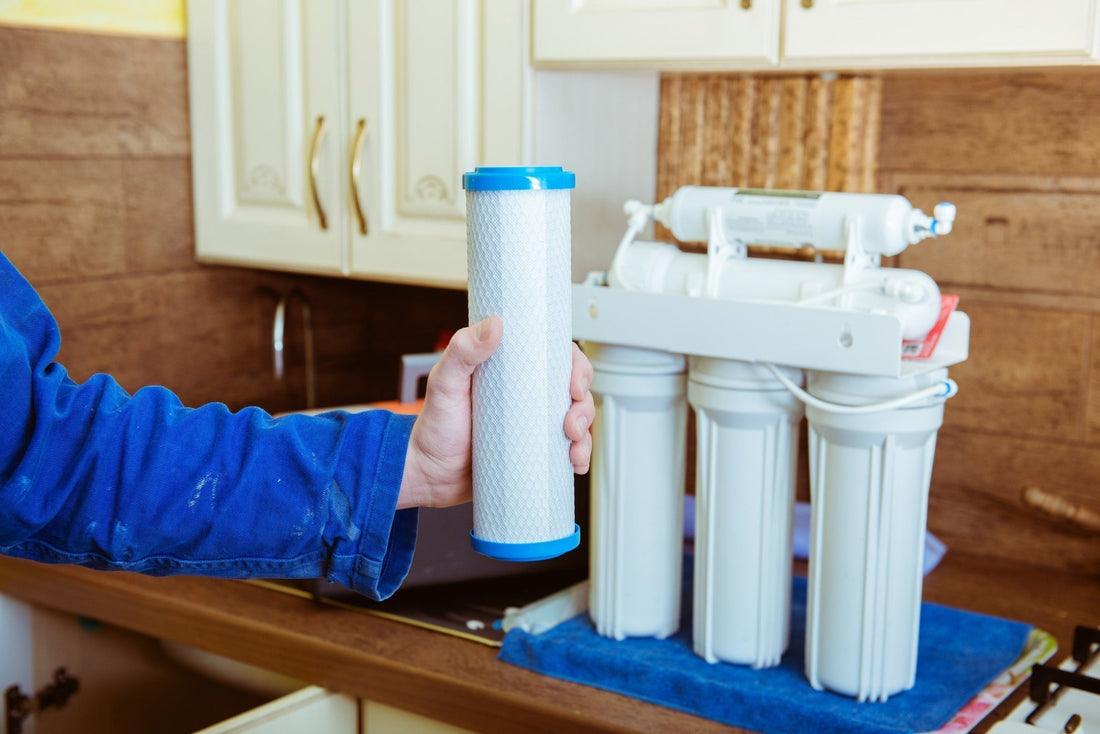Common Water Filter Buying Mistakes and How to Avoid Them

The Complete Guide to Choosing a Water Purification System
Around 71% of people feel concerned over the quality of the water they put in their bodies — and some have good reason. It can be difficult to tell what exactly is in your drinking water and how it could be affecting your health.
However, for those concerned, there is a solution. A water filter system can provide clean and clear drinking water by removing toxic or harmful elements present in non-filtered water, making sure you're drinking something that's actually good for you.
To avoid common mistakes when buying a water filtration system, check out the tips below:
1. Not Getting a Filter With the Right Certification
Whatever brand you go with, make sure it’s certified by the National Sanitation Foundation (NSF) or the Water Quality Association (WQA). These certifications mean your filter meets the highest standards for filtration and safety.
While filters without these certifications aren’t necessarily poor in quality, buying one with them gives you peace of mind.
2. Getting a System That Isn’t the Right Size
Water filtration systems aren’t one-size-fits-all. The right filter depends on the size of your home. Some systems labeled "whole-house" may not handle the demands of a large household. Always match your system to your home’s size to avoid disappointment — or overpaying.
3. Not Knowing How Dangerous Normal Tap Water Can Be
Just because you haven’t had issues with tap water doesn’t mean it’s completely safe. Tap water can contain lead, pesticides, and other contaminants depending on location, treatment, and infrastructure. Even if safe by legal standards, filtered water is often healthier and better-tasting.
4. Going on Brand Name Alone
Famous brands aren’t always the best choice. Some lesser-known companies may offer better value or higher filtration quality. Do your research and compare based on performance, not just reputation.
5. Not Testing Your Water Before You Buy
Before choosing a filter, know what’s in your water. Use a DIY test kit to identify specific contaminants. Then, buy a system designed to remove those substances. You can retest after installation to verify the filter is working.
6. Listening to Bizarre or Untested Claims
Salespeople might promise features that sound amazing — but aren't supported by science. Stick with proven systems that deliver clean water without unnecessary gimmicks or inflated promises.
7. Not Considering Repair and Maintenance
Water filter systems need maintenance, especially filter replacements. A clogged filter won’t work efficiently and may allow contaminants through. Be sure to factor in replacement and servicing costs before purchasing.
8. Not Having the Right Space for Installation
Some systems require more space than expected. Measure the area where you plan to install it, especially if it's a whole-house system. These are often placed near the main water shut-off valve for maximum effectiveness.
For the Cleanest and Safest Drinking Water, Avoid These Mistakes!
A good water filter system ensures healthy, high-quality water and peace of mind. But only if you choose the right one for your needs.
By avoiding the common mistakes above, you’ll be one step closer to enjoying water that’s clean, safe, and great-tasting.
Visit our water purification collection or contact our team for expert advice tailored to your needs.
